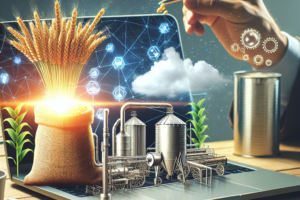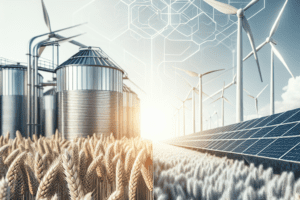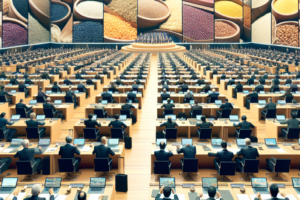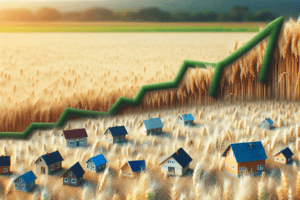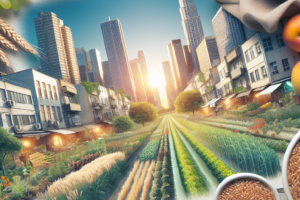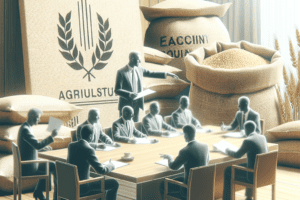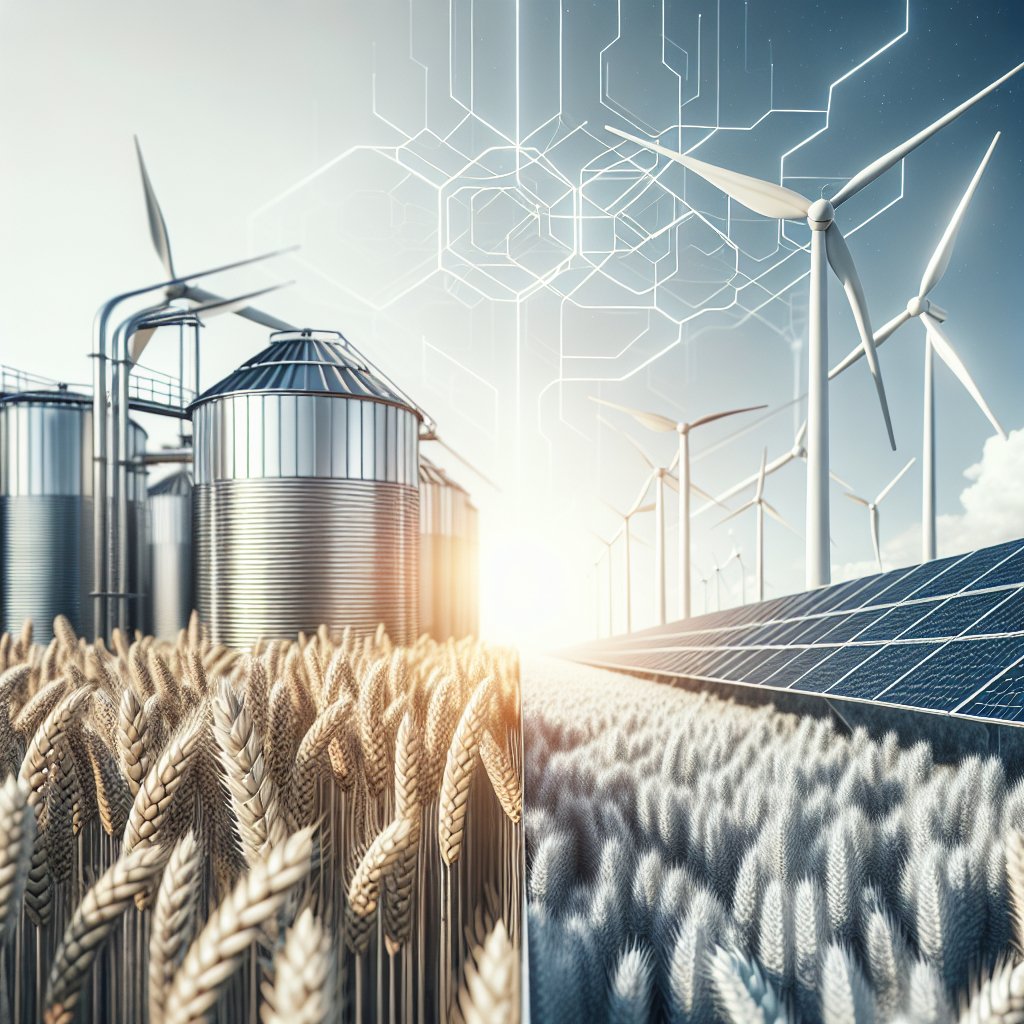The future of grain farming is poised for significant transformation as advancements in technology, sustainability practices, and changing consumer demands reshape the agricultural landscape. As the global population continues to grow, the need for efficient and sustainable grain production becomes increasingly critical. This article explores the emerging trends and innovations that are set to redefine grain farming in the coming years.
Technological Advancements in Grain Farming
Technology plays a pivotal role in the evolution of grain farming. From precision agriculture to biotechnology, innovations are enhancing productivity and sustainability. Here are some key technological advancements that are shaping the future of grain farming:
1. Precision Agriculture
Precision agriculture involves using technology to monitor and manage field variability in crops. This approach allows farmers to apply inputs such as water, fertilizers, and pesticides more efficiently, reducing waste and environmental impact. Technologies such as GPS, drones, and soil sensors enable farmers to gather real-time data about their fields, leading to more informed decision-making.
- GPS Technology: Global Positioning System (GPS) technology allows farmers to map their fields accurately, enabling them to identify areas that require specific attention. This can lead to optimized planting patterns and resource allocation.
- Drones: Drones equipped with cameras and sensors can provide aerial imagery of crops, helping farmers assess plant health, monitor irrigation, and detect pest infestations early.
- Soil Sensors: Soil moisture and nutrient sensors provide real-time data on soil conditions, allowing farmers to adjust their practices based on actual needs rather than assumptions.
2. Biotechnology and Genetically Modified Organisms (GMOs)
Biotechnology has revolutionized grain farming by enabling the development of genetically modified organisms (GMOs) that are resistant to pests, diseases, and environmental stresses. These innovations can lead to higher yields and reduced reliance on chemical inputs.
- Herbicide-Resistant Crops: Crops engineered to withstand specific herbicides allow farmers to control weeds more effectively without harming the crop itself.
- Insect-Resistant Varieties: GMOs that produce their own insecticides can significantly reduce the need for chemical pest control, promoting a more sustainable approach to farming.
- Drought-Tolerant Crops: With climate change leading to more frequent droughts, developing crops that can thrive in low-water conditions is crucial for food security.
3. Automation and Robotics
The integration of automation and robotics in grain farming is another trend that is gaining momentum. Automated machinery can perform tasks such as planting, harvesting, and monitoring crops with minimal human intervention.
- Autonomous Tractors: These self-driving tractors can operate around the clock, increasing efficiency and reducing labor costs.
- Robotic Harvesters: Robots designed to harvest grains can work faster and more accurately than human laborers, ensuring that crops are collected at the optimal time.
- Data Analytics: Advanced data analytics tools can process vast amounts of information from various sources, helping farmers make data-driven decisions that enhance productivity.
Sustainability in Grain Farming
As environmental concerns grow, sustainability has become a central focus in grain farming. Farmers are increasingly adopting practices that promote soil health, reduce carbon footprints, and conserve water resources. Here are some key sustainability trends in grain farming:
1. Regenerative Agriculture
Regenerative agriculture emphasizes restoring and enhancing the health of the soil and ecosystem. This approach goes beyond sustainability by actively improving the land’s capacity to sequester carbon and support biodiversity.
- Cover Cropping: Planting cover crops during the off-season helps prevent soil erosion, improve soil structure, and enhance nutrient cycling.
- Crop Rotation: Rotating different crops in a field can break pest and disease cycles, improve soil fertility, and reduce the need for chemical inputs.
- Reduced Tillage: Minimizing tillage helps preserve soil structure and organic matter, leading to healthier soils and reduced carbon emissions.
2. Water Conservation Techniques
Water scarcity is a pressing issue in many agricultural regions. Farmers are adopting various water conservation techniques to optimize water use and ensure sustainable grain production.
- Drip Irrigation: This method delivers water directly to the plant roots, minimizing evaporation and runoff.
- Rainwater Harvesting: Collecting and storing rainwater for irrigation can significantly reduce dependence on groundwater and surface water sources.
- Soil Moisture Management: Utilizing soil moisture sensors helps farmers apply water only when necessary, reducing waste and promoting efficient use of resources.
3. Organic Farming Practices
Organic farming is gaining popularity as consumers increasingly demand food produced without synthetic chemicals. This trend is influencing grain farming practices as well.
- Natural Pest Control: Organic farmers often rely on beneficial insects and natural predators to manage pests, reducing the need for chemical pesticides.
- Organic Fertilizers: Utilizing compost and other organic materials enhances soil fertility without the environmental impact of synthetic fertilizers.
- Certification and Labeling: As consumer awareness grows, organic certification becomes a valuable marketing tool for farmers, allowing them to command higher prices for their products.
Consumer Trends and Market Dynamics
The grain farming industry is also influenced by changing consumer preferences and market dynamics. Understanding these trends is essential for farmers looking to adapt and thrive in the future.
1. Demand for Healthier Grains
As consumers become more health-conscious, there is a growing demand for whole grains and nutrient-dense options. This trend is prompting farmers to diversify their crops and focus on producing grains that offer health benefits.
- Whole Grains: Products made from whole grains are increasingly popular due to their perceived health benefits, including higher fiber content and essential nutrients.
- Ancient Grains: Grains such as quinoa, farro, and spelt are gaining traction as consumers seek alternatives to traditional wheat and corn.
- Gluten-Free Options: The rise in gluten intolerance and celiac disease has led to increased demand for gluten-free grains, prompting farmers to explore alternative crops.
2. Local and Sustainable Sourcing
Consumers are increasingly interested in knowing where their food comes from and how it is produced. This trend is driving demand for locally sourced and sustainably produced grains.
- Farm-to-Table Movement: Restaurants and consumers are prioritizing local grains, supporting regional farmers and reducing the carbon footprint associated with transportation.
- Transparency in Supply Chains: Consumers are seeking transparency regarding farming practices, prompting farmers to adopt more sustainable methods and communicate their efforts effectively.
- Community Supported Agriculture (CSA): CSA programs allow consumers to buy shares of a farm’s harvest, fostering a direct connection between farmers and consumers.
3. Technological Integration in Marketing
As technology continues to evolve, farmers are leveraging digital platforms to market their grains and connect with consumers. This integration is reshaping the way grains are sold and distributed.
- Online Marketplaces: Farmers are utilizing e-commerce platforms to reach a broader audience, allowing consumers to purchase grains directly from producers.
- Social Media Marketing: Social media platforms provide farmers with a powerful tool to showcase their products, share their stories, and engage with consumers.
- Blockchain Technology: Implementing blockchain can enhance traceability in the supply chain, providing consumers with confidence in the sourcing and quality of their grains.
Conclusion
The future of grain farming is characterized by a convergence of technology, sustainability, and changing consumer preferences. As farmers embrace innovations such as precision agriculture, biotechnology, and automation, they are better equipped to meet the challenges of a growing global population while minimizing their environmental impact. Additionally, the shift towards sustainable practices and the demand for healthier, locally sourced grains are reshaping the market dynamics of the grain industry. By staying attuned to these trends and innovations, grain farmers can position themselves for success in an ever-evolving agricultural landscape.

